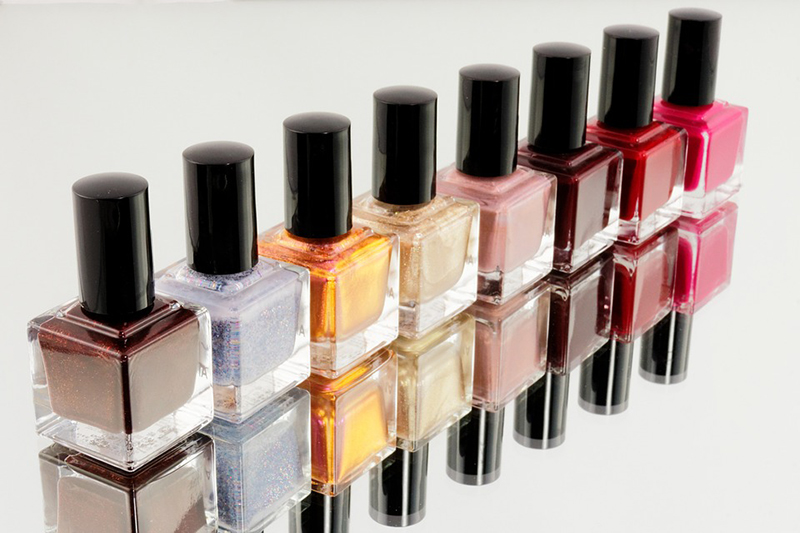“I want to go on a road trip, listen to good music, and discover beautiful places.”
Experienced drivers know that having a car is not easy. From dealing with many little problems, to making sure your vehicle is kept safe, there’s a lot to be learned about having a car.
Here are some 12 useful tips that can be helpful for both beginners and experienced drivers:
№ 12. Got a scratch? Use Nail Polish. It works wonders.
Before applying that nail polish on, make sure it is the same shade or color as your car. There are so many different varieties of nail polish colors on the market, so it should be easy to find one that matches the color of your car.
Apply it evenly to the scratch and as soon as it dries, buff the area a little until it’s smooth.
№ 11. Clear nail polish can stop a windshield crack.
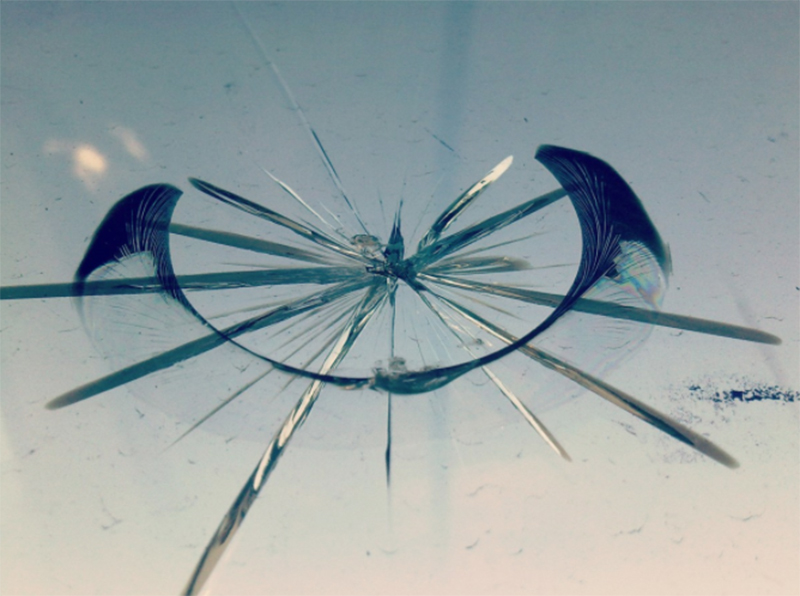
When a rock hits the windshield and causes a small crack, you can use this technique to stop the crack from growing bigger.
All you need is a clear nail polish: Apply 2-3 layers of clear nail polish on the crack to stop it from getting bigger.
№ 10. Turn the steering wheel when you need to leave the car for a short time.
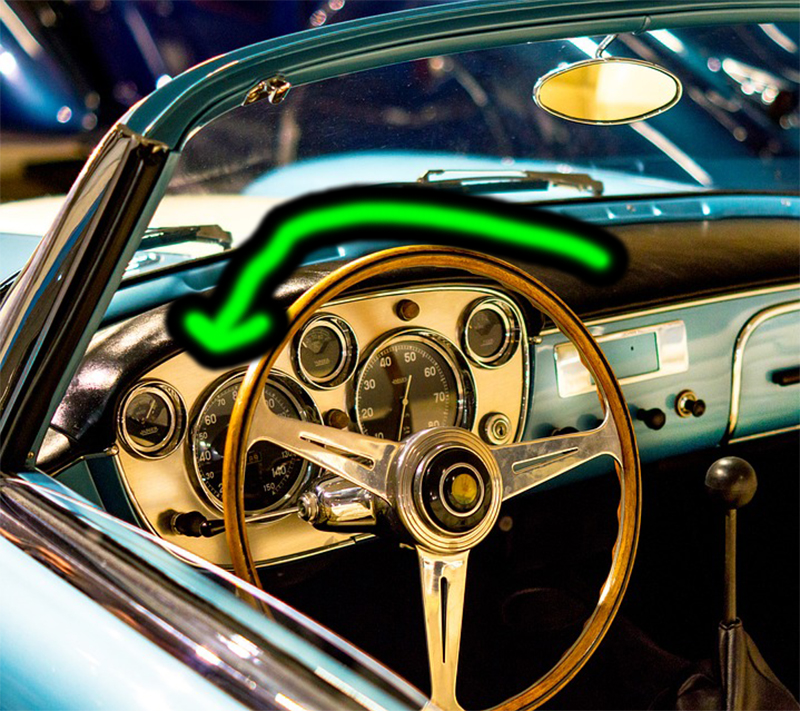
Leaving your car parked in the scorching heat of the sun can make your steering wheel really hot upon your return.
This is a technique to avoid having to touch a hot steering wheel: all you need to do is to turn 180 degrees (upside down) before leaving the car, then when you return and begin driving, your hands will be rested on the cool side of the wheel.
№ 9. Protect your eyes from the bright Sun.
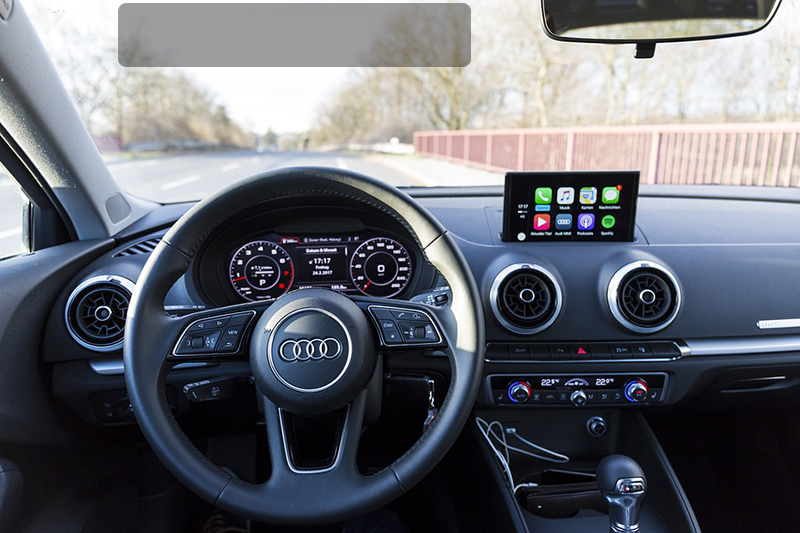
Many experienced drivers use this trick to reduce bright sun rays while driving.
Use an acrylic sheet and attach it to the windshield. Acrylic is easily attached to the windshield thanks to static electricity, and it protects your eyes from ultraviolet rays very well. Make sure the road is still highly visible through the acrylic sheet that you choose.
№ 8. A bay leaf will help prevent car sickness.

If you get motion sickness or car-sick, putting a bay leaf under your tongue before the trip can help, as the bay leaf relaxes both your tummy and your nervous system.
№ 7. A clever glasses holder.
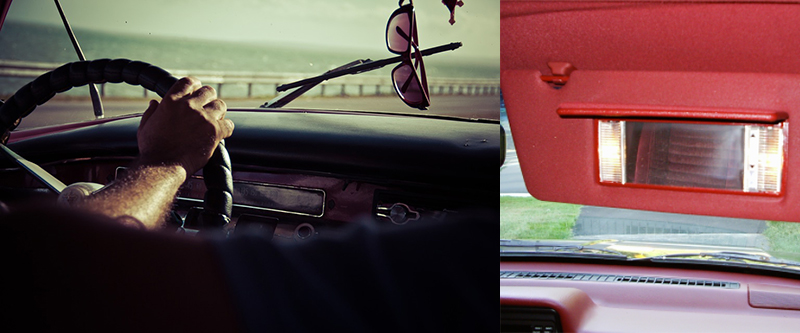
Aside from protecting your eyes from the sun, sun visors are also useful in keeping your glasses from falling and getting lost in your car. Sun visors are also good places to keep your parking vouchers, and you can get an extra clip to keep it on the visor.
№ 6. A lemon helps prevent drowsiness while driving.

Some citrus fruits work just like a cup of coffee.
Putting a slice of lemon under your tongue will help to wake you up. But it’s better to be safe than sorry, so we recommend not driving if you are tired. The best option is to pull over and take a nap, then when you’re rested resume driving.
№ 5. Enhanced cupholder.
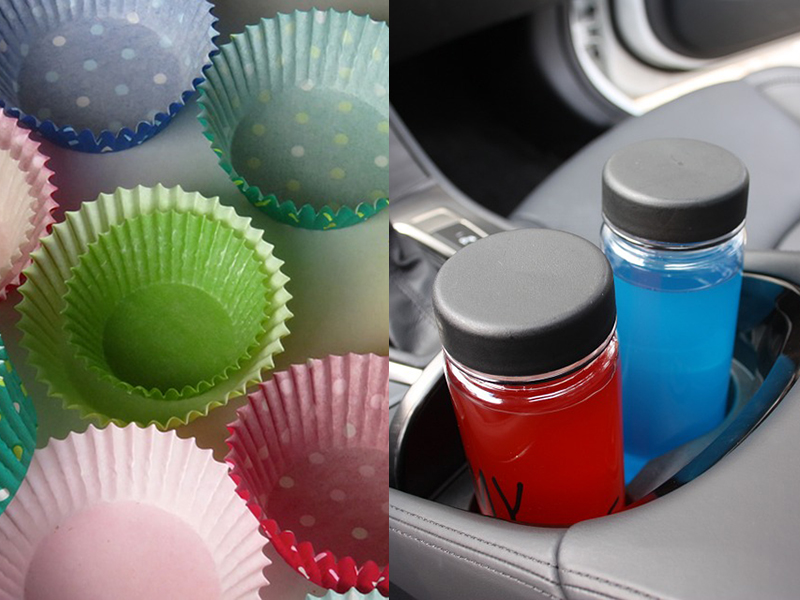
You can put a silicone cupcake case to effective use by placing it at the bottom of your car’s cupholder. The cupcake case will collect all of the little pieces of trash and crumbs that get in there, making it super easy to clean.
№ 4. Hang a tennis ball in the garage for easier parking.
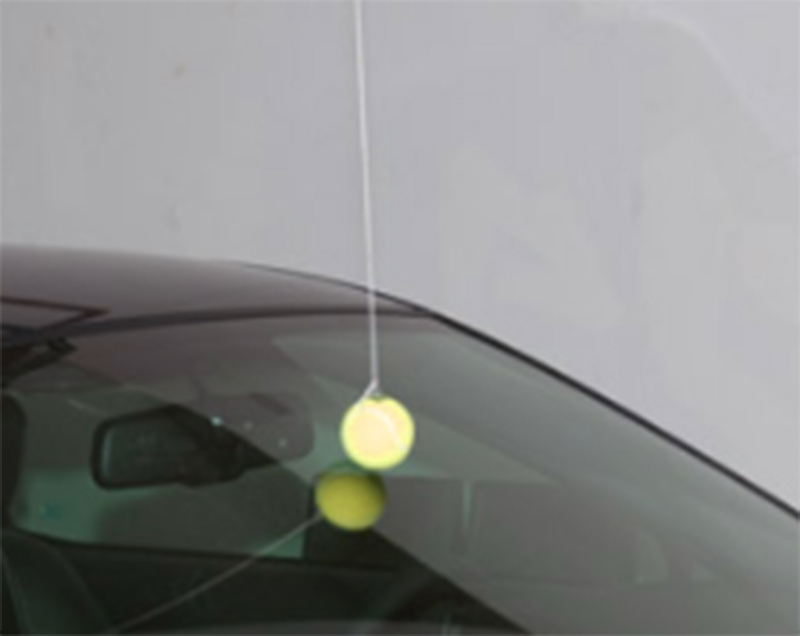
Hang a piece of string tied to a tennis ball from the roof of your garage, and measure the distance so that the tennis ball touches the windshield when you are 1.5-2 feet from the wall. This is a great way to keep you from running into the end of the garage, and can save you the stress of having to repair your call and the wall. It also helps so that you have room to walk in front of your car.
№ 3. Checking the oil quality.

Here is a unique way to check the oil quality in your engine.
First, heat the engine for 5-10 minutes then turn the ignition off.
Open your car hood and put a couple drops of oil from your engine on a sheet of white paper. Place the sheet of paper carefully in a warm place and allow 2 hours for it to dry.
Then check the result:
• A spot with smooth edges means the oil is good because it is not mixed with water.
• If the center of the spot is dark or gray it means it is time to change the oil because the oil is dirty.
• If you observe some bits of metal on the paper, it indicates some internal engine parts are being damaged because of low-quality oil. Upgrade to higher quality oil.
• If you see a light gray or brown spot on the paper, there are particles in the oil that have not dissolved. The oil also needs a change.
№ 2. Checking the gas quality.

You can do this by using another sheet of white paper and some gas. A drop of gas on a sheet of white paper is enough. Blow on the drop of gas and wait for it to evaporate.
You can tell that you are using a gas if the paper is still white. But if you see a greasy spot there is kerosene in it.
This is how you can check your gas for resin:
This time, you will need a glass instead of paper to check for resin in your gas. After putting a small drop of gas on a piece of glass (the bottom of a bowl works well), set it on fire. After it burns, observe the resulting color. White is negative for resin and Brown is positive for resin. Resin damages your car engine.
This is how you can check if water was added to the gas:
To check for the presence of water in your gas, you will need a clear jar and manganese solution. Pour gas and some manganese solution in the jar. Mix it well by shaking the jar.
After shaking it, observe the solution and its color. Dissolved manganese crystals and a purple to pink color indicate the presence of water in your gas.
№ 1. Super fast car ventilation.
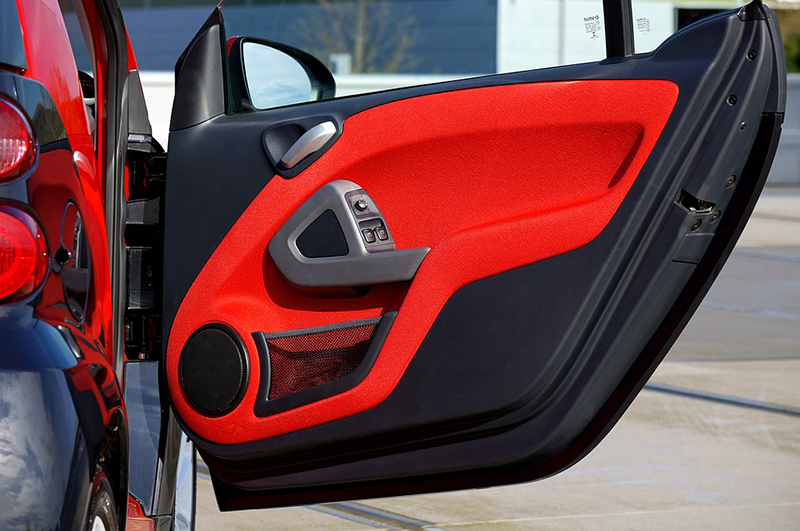
If you return to your car and it is extremely hot inside, use this technique. Open one door and one front window on the opposite side. Then open and close the door and this will cause you to fan the air out of the car, cooling it down.
Not only does this facilitate proper ventilation, but it can also free the car of odors.
Have you used any of these tips before? Let us know in the comments. You are loved.













